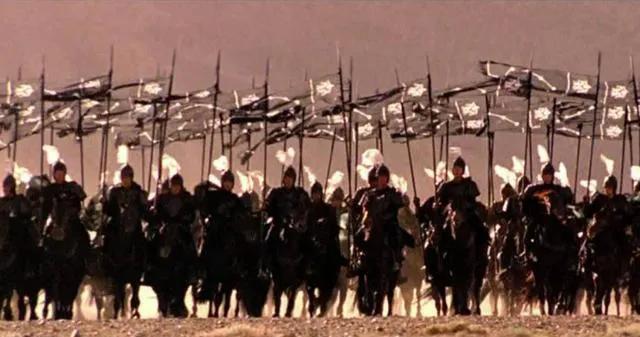In 260 BC, the Warring States of Qin and the State of Zhao broke out a strategic decisive battle to determine the trend of the Warring States in the Battle of Changping, and the Zhao State changed the generals to appoint Zhao Kuo, who would only talk on paper, as the main general, resulting in the total annihilation of the Zhao army and the destruction of hundreds of thousands of Zhao troops. Since then, none of the six countries of Shandong has been able to accelerate the process of unifying China by the Qin state alone

From 225 BC to 223 BC, Qin Shi Huang sent Wang Qi as the main general to unify the Six Kingdoms in the Battle of Chu. In 225 BC, King Yingzheng of Qin took advantage of the internal infighting in Chu to send Li Xin mengtian to lead a 200,000-strong army to attack the State of Chu in two ways, the King of Chu sent Xiang Yan to lead an army to resist the defeat of the Qin army Li Xin and flee back to the Qin state with the remnants of the qin army, and in 224 BC, Wang Qi and Meng Wu led 600,000 Qin troops to attack the State of Chu again and defeat the Chu army led by Xiang Yan. The following year, in one fell swoop, the Chu capital Shouchun captured the Chu king Chu Guo and perished
219 BC - 214 BC Qin Shi Huang unified the Six Kingdoms of the Central Plains after the Southern Expedition to Baiyue Battle, Qin unified the Six Kingdoms after the collection of seven kingdoms to send troops 500,000 points and five roads to attack Baiyue, the first time in the attack on guangxi Xi'ou army in the unfavorable progress Tuju battle killed 300,000 Qin army killed 300,000 people up and down the two sides did not have the strength to continue to attack to form a confrontation in 214 BC Lingqu grain road opened Qin Shi Huang and then gathered 100,000 troops and the remaining 200,000 Qin army to march into Baiyue again, this time the Qin army did not encounter major resistance and occupied the entire territory of Lingnan and northern Vietnam And set up the South China Sea, Guilin, Xiang County, laying the map of China's southern Xinjiang
In 383 AD, the Former Qin Campaign against the Eastern Jin Dynasty, (about 880,000 on both sides) the Former Qin army was annihilated and more than 700,000 people fled Fu Jian himself was captured and killed by the rebellious subordinate Yao Cang, which finally determined the pattern of a long-term split confrontation between the Northern and Southern Dynasties
The Three Expeditions of the Sui Dynasty to Goguryeo (Sui Dynasty 1.3 million) From 612 to 614 AD, the three conquests of Goguryeo were all personal conquests by the Sui Emperor, the first Time the Sui Dynasty soldiers exceeded 1.3 million due to the Sui Emperor's command error, the Sui Dynasty suffered a crushing defeat, the second time at least 600,000 troops were withdrawn due to Yang Xuangan's rebellion, and the third Time the Sui Dynasty sent nearly one million troops to exhaust the national strength and the unarmed people were violently expropriated and led to the outbreak of a large-scale peasant uprising and the destruction of the country
In 1211 AD, at the Battle of Mengjin Wild Fox Ridge in Mongolia, Genghis Khan personally led a large army to attack the Jin Kingdom in the south, and the main force of the 500,000 Jin army lost most of the Mengjin in this battle, and the situation was completely reversed and could no longer compete with the Mongolian army head-on. The Mongol army took JuyongGuan in Dexing Province and abandoned the pass to escape the Mongolian army to Zhongdu. It did not take long for the Jin state to die under the attack of the Mongol and Song forces